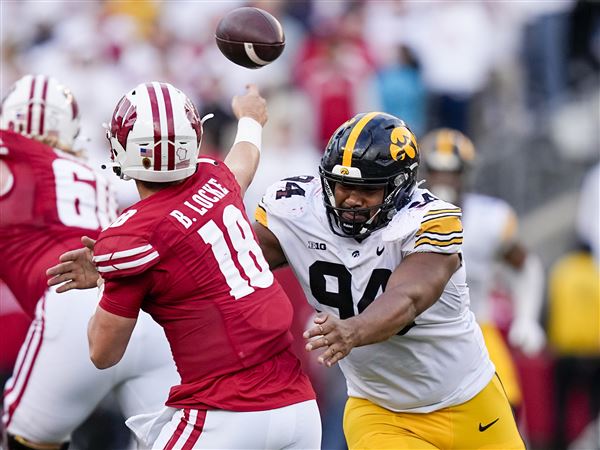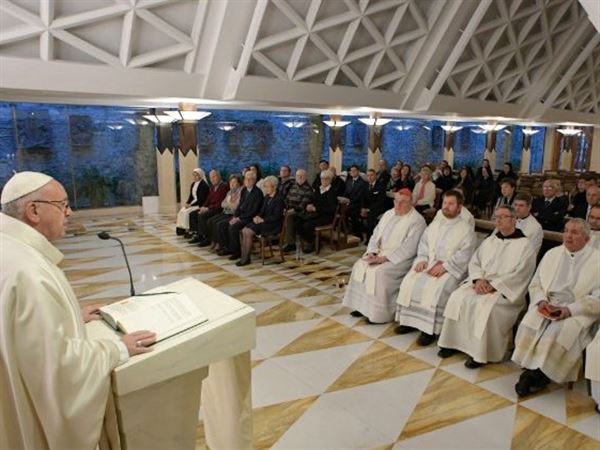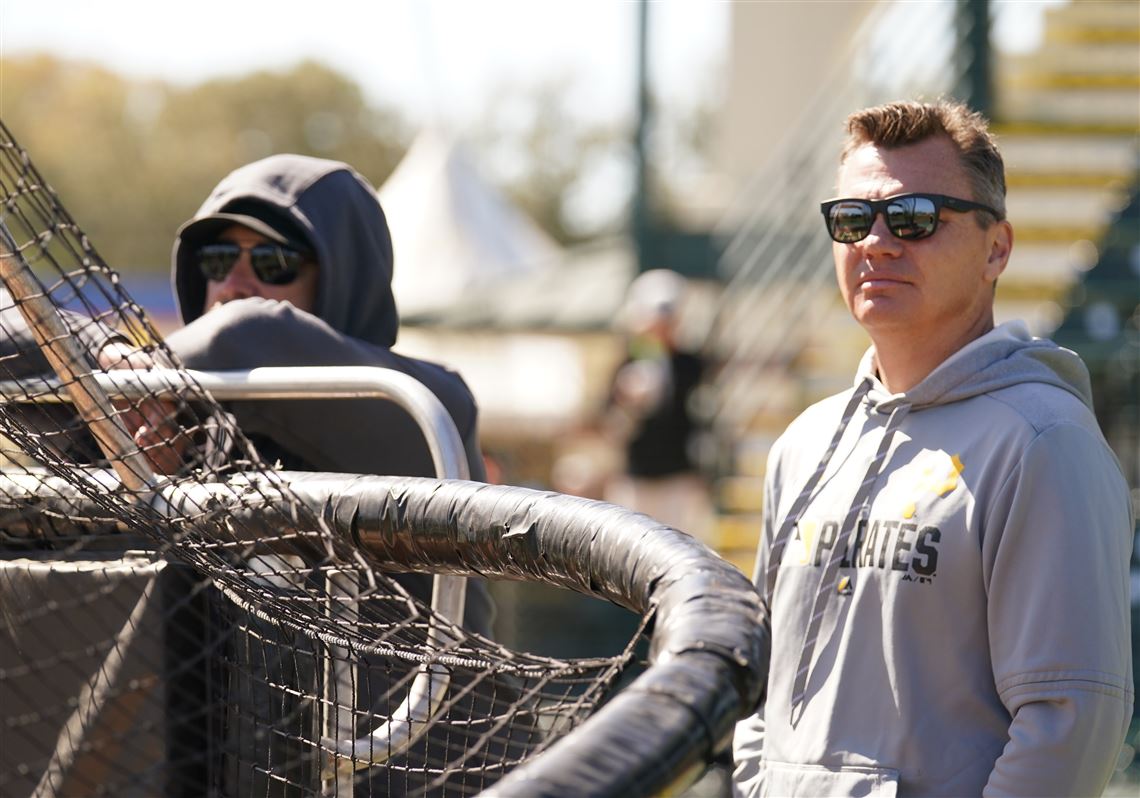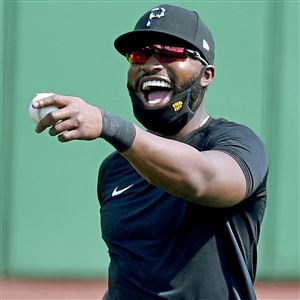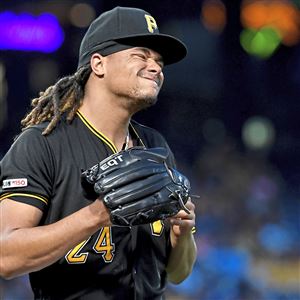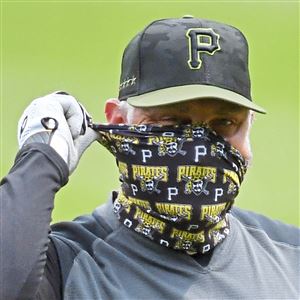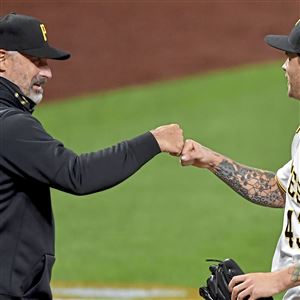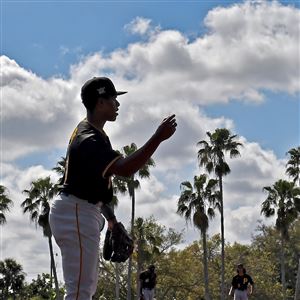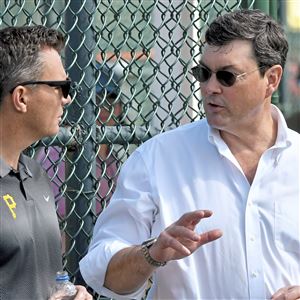First in a two-part series.
The bitterness of a late-night brawl with the Reds hung over Cincinnati’s Great American Ball Park when the Pirates reported for work on July 31, 2019, the day of Major League Baseball’s trade deadline. Back in Pittsburgh, former general manager Neal Huntington was busy working the phones while peddling one of the more attractive assets on the market at the time — Felipe Vazquez.
With the former closer’s off-field issues not yet publicly known, the possibility of trading Vazquez made Huntington a popular man and forced him into an interesting predicament. Knowing he had Vazquez under team control through 2023, Huntington held firm in his demands, hoping to get two of the Dodgers’ top three prospects at the time: infielder Gavin Lux, pitcher Dustin May or catcher Keibert Ruiz. The staring contest went nowhere, Vasquez went to prison, and the Pirates got nothing in return.
While the Chris Archer trade remains — and always will be — the most well-known misstep of the former regime, how Huntington handled this scenario represents a significant departure from how Ben Cherington has conducted business in nearly 15 months as Pirates GM. It’s impossible to say whether Cherington would’ve traded Vasquez, but if he did, it’s doubtful he would have isolated on what, looking back, was an impractical return.
Amid a clear rebuild where the Pirates have finally picked a definitive direction, Cherington and his staff have tweaked their strategy when it comes to trades, a shift that occurred because baseball teams are increasingly unwilling to trade top-tier prospects like Lux, May or Ruiz. Knowing this, Cherington has pushed the Pirates to acquire more of the guys who they view could eventually blossom into that mold — but do the proper legwork to acquire them before they actually get there.
“We want to be as thorough as we can with the process of valuing other teams’ players and ranking those players,” Cherington told the Pittsburgh Post-Gazette by phone last week. “Because where we are right now, we’re going to be looking at acquiring young, professional players in all kinds of ways. We want to be prepared for that.”
Added assistant GM Kevan Graves, a young, well-regarded executive around the industry who has been tasked with overseeing the Pirates' amended player acquisition strategy: “The focus over the last year has been on acquiring ceiling and upside.”
To be fair, this strategy isn’t new. GMs of any sport have always balanced certainty and assumed risk, a process that's often described as “building variance” into trades. Do you want the sure bet who's closer with a lower ceiling or the player who's younger and further away but has more potential?
What the Cherington-led Pirates are doing simply involves building in more variance than they ever have in the past. They’re employing an ultra-aggressive approach to acquire talent while also accepting that there will inevitably be some failures, too, a reality worth acknowledging when talking about young, developing prospects.
It's a gamble Cherington has been willing to take for a couple reasons, starting with the Pirates' budget constraints. To build a winning team here, he knows he'll need several young players producing on cheap contracts before they reach free agency and potentially price themselves out of town.
And before you start screaming about Bob Nutting, that idea is hardly unique to the Pirates. It's why teams are so reluctant to trade those can’t-miss prospects, the types of guys who not only can hit, pitch or field really well but also make things easier from a business standpoint, even in larger markets.
Secondly, as Cherington has repeated plenty, the Pirates simply need to add more talent. There wasn't enough when he took over, and the Pirates still aren't where he wants them to be. In fact, they may never reach that point considering the continual need they'll have to back-fill at every level once players graduate through the system.
The third reason here is much more simple: There's really no other option. If the Pirates were peddling Chris Sale in his prime the way the White Sox were in 2016, perhaps they could acquire three top 10 prospects the way Chicago did, including MLB Pipeline's No. 1 overall at the time, infielder Yoan Moncada.
It won't insult Josh Bell, Joe Musgrove or Jameson Taillon to say that the Pirates were not dangling those sort of assets, so Cherington (and Graves) knew they had to pivot. The Pirates could’ve shot for a Gerrit Cole-style trade where they acquired fairly known commodities such as Musgrove, Colin Moran, Michael Feliz and Jason Martin, or they could’ve tried door No. 2, which they did.
It’s the riskier one, sure, but also the one — if the Pirates are smart — that could eventually net them the high-level prospects they’ll need to mix with Ke’Bryan Hayes, Nick Gonzales, Quinn Priester and others, creating a legitimately talented team whenever this all comes together.
“In the cases where we have big-league talent leaving, it’s really, really difficult to get those difference-making, upper-echelon players,” Graves said. “They’re just not getting traded, even for just good major league players.
“Our objective has been to find those players before others do, to find players who end up being those top-tier prospects the following year.”
Pirates fans saw that strategy play out on Christmas Eve with the Bell trade. In addition to pitcher Wil Crowe — who’s viewed more as a safe-bet, moderate-upside type — the Pirates acquired 19-year-old Eddy Yean.
A right-handed starter who throws 97 mph with terrific stuff and an advanced feel for pitching, Yean has not yet made it out of the Dominican Summer League, meaning there’s a lot that can happen between now and his MLB debut.
In the Musgrove trade, the Pirates did the same thing with center fielder Hudson Head, a 19-year-old, five-tool outfielder who’s played just 32 games of rookie ball. The Padres — who aren’t idiots — gave Head a $3 million signing bonus, a record for a third-round pick and indicative of the potential they saw in him.
This whole thing actually started in the Starling Marte deal. That’s when Cherington traded for shortstop Liover Peguero and hard-throwing right-hander Brennan Malone. Peguero has played 22 games at High-A. Malone has logged eight pro innings. They’re both just 20 years old.
“There’s always going to be a balance of certainty and confidence versus risk in any of the acquisitions that we make,” Graves said. “As we look at the acquisitions we made last offseason in the Marte trade, as well as this offseason, they’re younger players who are inherently more risky.
“The flip side is that, in assuming that risk, and assuming that variability, you’re also potentially acquiring greater upside. That’s where a lot of our time and energy has been spent, as we’ve assessed target prospects in a lot of these trades.”
Tomorrow: The process behind the Pirates’ changed strategy.
Jason Mackey: jmackey@post-gazette.com and Twitter @JMackeyPG.
First Published: February 10, 2021, 7:43 p.m.
